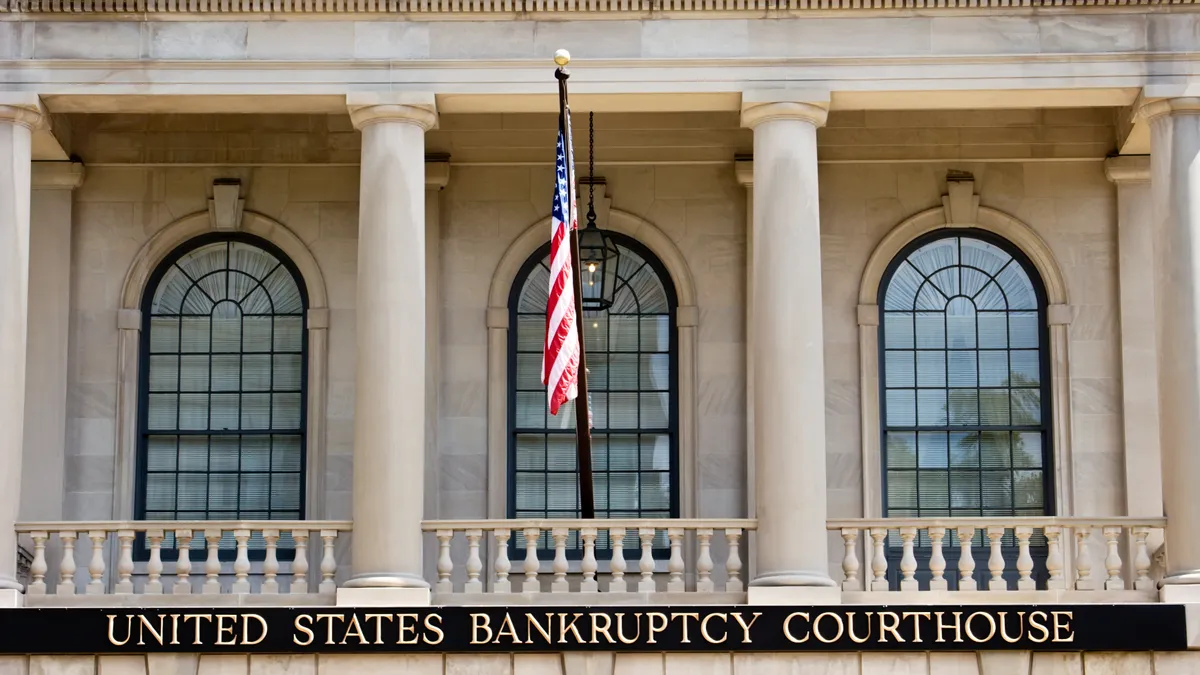Dive Brief:
- Total commercial Chapter 11 filings jumped 43% to 1,894 in the first quarter compared to Q1 2023, the largest year-over-year increase of any of the major U.S. bankruptcy filing categories, all of which surged in the YoY period, according to a Tuesday release from data provider Epiq Bankruptcy.
- At the same time, the pace of total bankruptcy filings so far this year show signs of moderating, with overall filings rising 14% YoY to 120,094 in Q1 compared to the 18% overall YoY increase in bankruptcy filings seen in the full calendar year 2023 versus 2022.
- “I believe Q1 ’24 signals that economic distress is stabilizing,” said Chris Ward, chair of bankruptcy and restructuring at the Polsinelli law firm and president elect of the American Bankruptcy Institute in an email. “Companies with strong balance sheets are prepared for prolonged interest rates. Ones that were struggling prior to the implementation of higher rates will continue to struggle and we will likely see an increase of Chapter 11 bankruptcy filings.”
Dive Insight:
The continued surge in business bankruptcy filings in the first quarter comes as many finance leaders are keeping a close eye on market data in an effort to gauge whether or not the Fed will be able to pull off a soft landing by bringing inflation down without tipping the economy into a recession.
March marks the 20th consecutive month that total, individual and commercial filings have posted YoY increases, according to Epiq. Experts have pointed to higher interest rates as well as the drying up of pandemic-related lender forbearance initiatives and government assistance as some of the drivers of the ongoing rise in bankruptcies.
Ward said the significant increase in filings last year — which he called a normalization to an almost pre-pandemic level — was not sustainable, especially in what he called a “strong economy” that has bucked higher interest rates.
“The current rise in filing rates indicates that certain aspects of the market did have some difficulty with higher interest rates, but overall the economy remains strong and companies are digging in their heels for a long and slow recovery,” Ward said.
The continued uptick in bankruptcies had been anticipated by some bankruptcy experts. Michael Hunter, vice president of Epiq AACER, told CFO Dive in January that he expected business filings to rise again this year at a double-digit pace because the cost of funds is still so high. He anticipated it would take at least 12-24 months for any rate reductions — which have yet to occur — to ease the financial pressures that are pushing businesses into bankruptcy court.
“As we expected, the upward trajectory in both commercial and individual related bankruptcy filing volumes continue,” said Hunter in a statement included in the Tuesday release. “Factors contributing to this trend are the higher cost of funds and interest rates, a reduction in consumer discretionary spending, higher housing costs, and a continued drawdown of excess savings.”
Another factor that may be driving certain business filings is that the debt eligibility limit for small busineses electing a supchapter V reorganization under Chapter 11 of the Bankruptcy code will be reset in June to $2.72 million from $7.5 million, according to Epiq. The American Bankruptcy Institute is urging Congress to extend or permanently maintain the increased limit and asserting that it would allow more restructurings, reduce liquidations and save jobs.
“If the debt limit is not extended, it could be problematic for smaller market companies in distress,” Ward said.
The list of companies that have filed for bankruptcy protection this year to date include the Hudson, Ohio-based sewing and crafts chain Joann, Miami, Florida-based primary care chain Cano Health, and Peoria, Illinois-based Petersen Health Care, one of the country’s largest nursing home operators.












